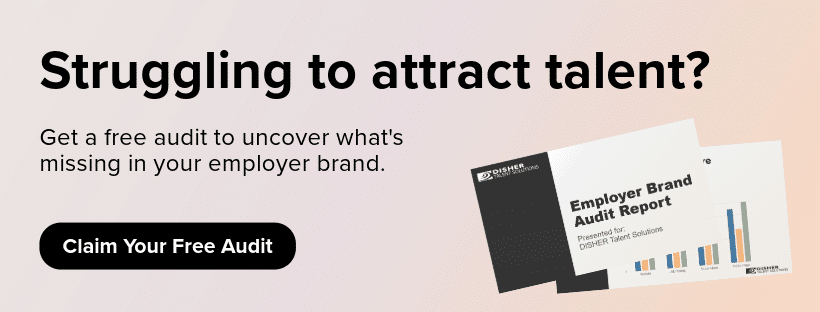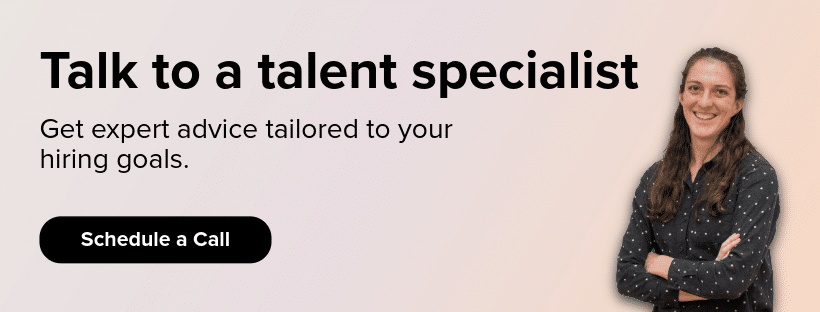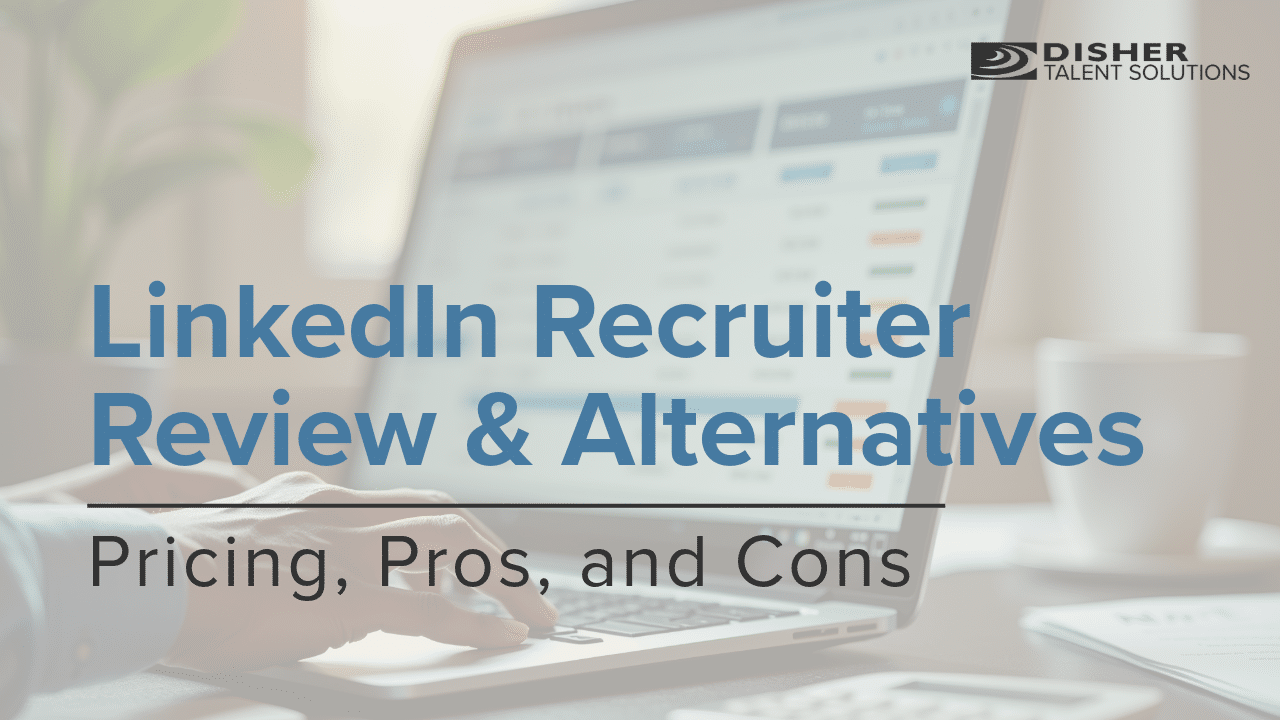Our Take on Top Recruiting Trends: What’s Actually Making a Difference?
September 23, 2025

Hiring managers are navigating a complex recruiting landscape packed with new technologies, evolving candidate expectations, and real pressure to fill roles with speed and precision. From what our team is seeing on the ground—in daily calls with hiring managers and candidates—the sheer volume of “game-changing” trends can feel overwhelming. It’s never been harder to spot which innovations genuinely move the needle, and which are just distractions.
In this guide, we’ll highlight:
- What are the Top Recruiting Trends to Watch for 2026?
- How Will Advancements in AI and Automation Change Recruitment?
- Remote vs. Hybrid vs. Onsite: What works in 2026?
- Is Skills-Based Hiring the New Standard?
- How are Leading Companies Enhancing Candidate Experience This Year?
- Which Recruiting Tools and Platforms Offer the Best ROI for 2026?
- What are the Most Effective Recruiting Metrics?
- What Hidden Pitfalls Should You Be Aware of in 2026’s Recruiting Landscape?
- How Can You Prioritize Recruiting Trends for Sustainable Success?
What are the Top Recruiting Trends to Watch?
Here are the trends we currently see the most in recruiting:
- Automation and AI everywhere: From resume screening to candidate communications, AI-enabled hiring tools are close to the norm, not the exception.
- Remote and hybrid hiring is stabilizing: Most teams are building hybrid policies into the core hiring process instead of “temporarily” flexing.
- Skills-based hiring: Many companies are dropping degree requirements, shifting to practical assessments or demonstrations of skill.
- Employee well-being and work-life balance: These are no longer just perks; candidates now expect them as necessities.
How Will Advancements in AI and Automation Change Recruitment in 2026?
By the end of 2026, artificial intelligence (AI) tools may manage nearly every part of the hiring process. We’re seeing AI used in everything from resume screening to interview analysis, research, and even nudging recruiters and hiring managers with data-driven suggestions. AI-driven hiring helps companies hire faster and smarter, leaving manual-screening organizations struggling to keep up. The edge, though, still comes from those who can interpret AI-driven insights and combine them with real people skills.
Remote vs. Hybrid vs. Onsite: What works in 2026?
There’s no universal answer anymore. Hybrid is the new normal, with organizations that offer location flexibility seeing bigger, more diverse applicant pools and less turnover. But it’s totally dependent on the expectations of the role—some jobs genuinely need more onsite presence for collaboration, specialized equipment, or client-facing work. What we’re seeing is a strong demand for more flexibility across industries, regardless of title or function. Candidates are actively seeking roles that fit their lives, and companies that overcomplicate hybrid policies or ignore the flexibility factor risk losing out on top talent.
Is Skills-Based Hiring the New Standard?
The simple answer: Yes, and for a good reason. Many companies have already dropped degree requirements, and many more will follow suit in 2026. Instead, they’re turning to practical assessments, portfolios, and “job auditions,” which better reflect real potential than paper credentials. This shift expands the talent pipeline and promotes more equitable hiring.
Making skills the standard isn’t just about technical ability; it’s about balancing proven expertise with culture add. The best hires meet the role’s needs and align with how your team works and grows. Blending skills-based screening with assessments of adaptability, communication, and values is what builds stronger, longer-lasting teams.
How are Leading Companies Enhancing Candidate Experience This Year?
Leading companies are raising the bar on candidate experience in real, measurable ways.
- Reducing “application black holes” by responding to every applicant, even if it’s a quick, templated email.
- Using candidate satisfaction surveys and Net Promoter Scores to find and fix pain points.
- Making interview coordination faster and more transparent through self-serve links and real-time updates.
- Leveraging feedback to continuously improve, resulting in higher retention, more referrals, and better Glassdoor ratings.
Additional ways we at DISHER Talent Solutions improve candidate experience:
- Reply to every applicant within 7 days, making sure no one feels ignored or left in the dark.
- Provide continuous updates throughout the hiring process, so candidates always know their status and next steps, reducing uncertainty and anxiety.
- Give interviewed candidates personal feedback through a phone call, even if they weren’t selected.
- Use candidate surveys to collect feedback from both hired and non-hired applicants to guide continuous improvements.
- Check in with new hires after placement to help them settle in and build lasting relationships.
Which Recruiting Tools and Platforms Offer the Best ROI?
The right recruiting tech stack blends:
- An ATS that automates and integrates easily with your HRIS.
- AI sourcing tools to unearth passive talent (not just job board regulars).
- Candidate experience platforms: think automated updates, fast scheduling, and smoother onboarding.
- Analytics dashboards: HR teams need live visuals on metrics like source effectiveness and offer acceptance.
ROI comes from streamlining, not increasing complexity. Good tools free up time and deliver clear, actionable data.
What are the Most Effective Recruiting Metrics in 2026?
Don’t try to track everything—focus on what you’ll actually act on:
- Time to hire
- Offer acceptance rate
- Candidate drop-off rate (where do candidates bail in your process?)
- Quality of hire (first-year retention, manager feedback)
- Candidate experience score (NPS)
Smart teams benchmark the present and select a few metrics to drive real improvement every quarter.
What Hidden Pitfalls Should You Be Aware of in 2026’s Recruiting Landscape?
- Over-automating: Candidates notice when the “human” disappears. Don’t let bots run everything.
- Making things too complex: Layers of tech or unclear rules slow things down.
- Ignoring feedback: Teams that ignore candidate or hiring manager input don’t get better—and lose out fast.
- Poor candidate experience: Bad hiring journeys don’t just lose candidates, they damage your employer brand.

How Can You Prioritize Recruiting Trends for Sustainable Success?
You don’t need to chase every tool or trend. Our most successful clients:
- Map their gaps. What’s really blocking good hires now?
- Pilot one new trend or tool at a time, measure, and debrief.
- Stay focused on what delivers results for their specific team, not what’s making headlines.
Next Steps for Hiring Teams
Smart recruiting isn’t about doing everything or following “the next big thing.” It’s about doubling down on what’s effective, listening to candidates, and investing in processes that move the needle for your organization. That’s what our team is committed to—and it’s how hiring managers can get (and keep) an edge.
Want a clearer strategy or a full review of your current process? Schedule a call with our team, and we’ll help you spot opportunities, fix sticking points, and build a plan fit for 2026.





